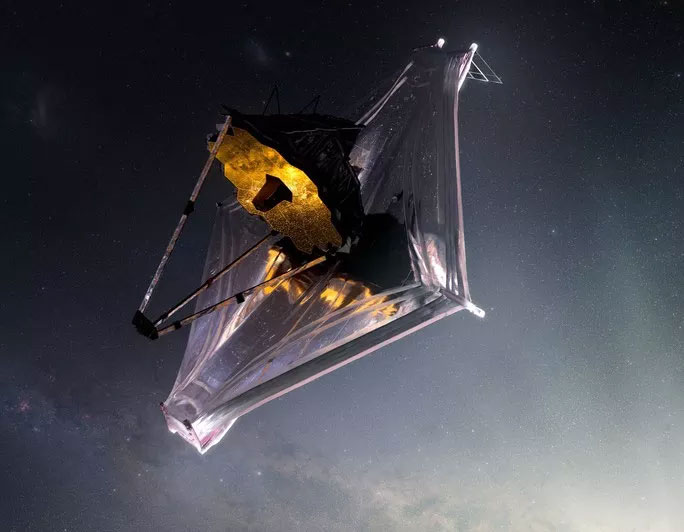The James Webb Space Telescope has recently made headlines with its stunning images of extremely distant objects, paving the way for an even more exciting mission: Identifying potentially habitable planets.
According to a recent paper published in The Conversation by two scientists specializing in exoplanets and astrobiology – Professor Chris Impey and Professor Daniel Apai from the University of Arizona, USA – a highly powerful telescope is essential to detect subtle changes in light from an exoplanet, and NASA’s James Webb Space Telescope has proven to be just that.
The collaborating scientists with NASA revealed that one of the images recently disclosed by James Webb – the spectrum of the giant gas planet WASP-96b – holds profound significance.

James Webb Space Telescope.
This extreme gas giant is unlikely to harbor life, but the chemical signatures derived from the light of this distant planet (located about 1,150 light-years away) showcase the remarkable capabilities of James Webb. These chemical signatures will reveal whether a planet is capable of supporting life.
In the coming months, Webb will turn its mirrors toward TRAPPIST-1, a star system that hosts seven Earth-like planets, with scientists nearly certain that at least one of them, TRAPPIST-1e, which is Earth-sized and located in the habitable zone, must have the potential for life.
Interestingly, this planet is only 39 light-years away from us, so if it indeed supports life, NASA’s “superb Webb” will certainly be able to detect the signs.
The James Webb Space Telescope is capable of searching for extraterrestrial life in various ways, even though it was not specifically designed for this mission. It can do so simply because it is incredibly powerful.
For extremely distant planets like WASP-96b, it can still study the planet as it transits its parent star by capturing starlight filtered through the planet’s atmosphere, thereby determining the composition of that atmosphere.
For closer planets, Webb can scrutinize changes in levels of carbon dioxide, methane, water vapor, and other strong biosignatures of life within the atmosphere.
Webb will be further supported by three ground-based telescopes specifically designed for hunting biological structures: the Giant Magellan Telescope, expected to be completed in 2025 in Chile, the “Thirty Meter” Telescope currently under construction in Hawaii, and the “European Extremely Large Telescope” being developed at the Southern European Observatory in Chile.
The space telescope, which typically has a wide field of view, will primarily be used for screening missions, while the massive ground-based telescopes will carry out more in-depth research.


















































